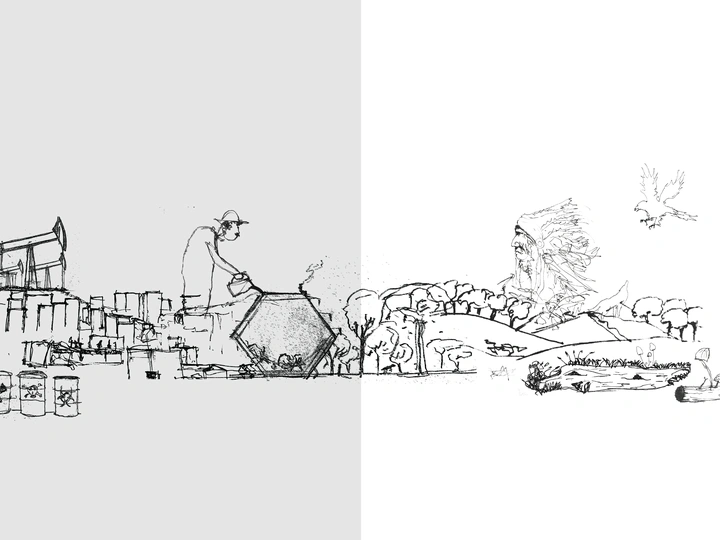Distorted Cities

Well, in short, I am deeply imbedded in figuring the role of the nonhuman in urban planning. Considering that such entities are independent beings, and that we usually subject them to our anthropomorphic needs, our approach to them should change in architecture and urban planning. I come from a background of ecological architecture from IAAC, however, such topic I have started to self-develop through readings of philosophical and social books, like Latour, Deleuze, Guattari, Stengers, Haraway, Fromm, Lovelock, Margulis etc.
More about my studies; In Valldaura Labs, Barcelona, in my masters program we constructed a building, The Solar Greenhouse, which beyond its profound inclusion of surrounding actors, was awarded with three different achievements, which can be found on my CV. notable achievement was given by Dezeen. I additionally completed a research for my thesis, documented in Kosovo, Prishtina. The paper is published on Research Gate and it involves two theories, Gaia and Actor-Network-Theory in urban planning processes. the research was supported with empirical analysis a topic which I believe is crucial in the aspect of understanding our territories.
I had completed various roles also in the work environment. However, mostly keen I was with theoretical and empirical (practical) implementation of studying urban territories.
The objective of this study is to involve architecture and its planning abilities, to face the irregularities that have proliferated over the current geological epoch, the Anthropocene, and to grow and evolve together with the rest of the disciplines who tackle its actual problems. By embarking upon the duality that architecture is constantly involved in relations with the physical environment and repetitively reassembled into a social construct, it seeks to portray a grounded reciprocal dialogue with the agencies of these two systems in order to create a sustainable habitable environment for nonhumans and humans. This premise is backed by two essential theories which each describe one constituent of the above-mentioned duality. The Gaia theory, of James Lovelock and Lynn Margulis, which shares a novel knowledge upon the animate beings and the physical territory of our planet, and the Actor Network Theory (ANT), mostly in accordance with Bruno Latour’s work, which describes the social or natural world as a world assembled of constantly, ever changing, in associations, actors. Furthermore, the following research is applied on two selected urban spaces of the capital city of Kosovo, Prishtina. The first territory is the old Bazaar of the capital, and the second space is the Railway Station of Prishtina and its surrounding territory. Additionally, the existing state of these case studies aims to inform, through the systemic knowledge of the two theories, the architectural decision making, in order to generate a striving, livable atmosphere for all beings.